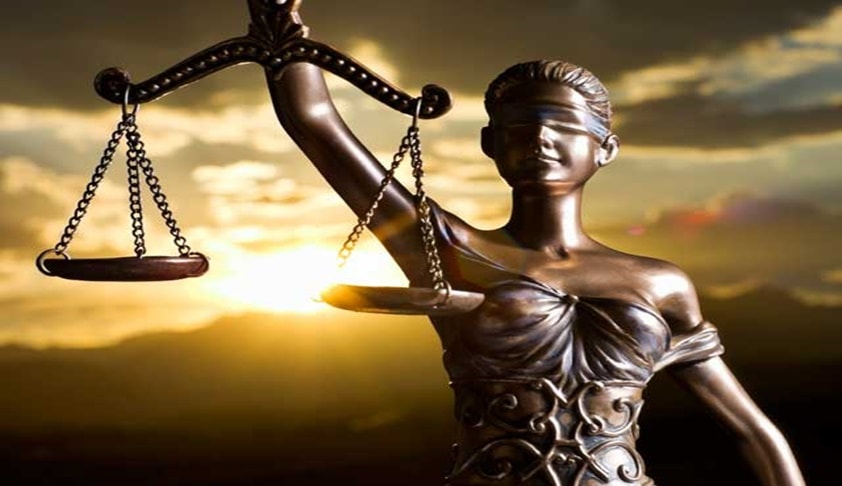Clinical Legal Education As A Means To Advance Access To Justice In India
Avani Bansal
4 July 2017 1:57 PM IST
Background The Preamble of the Indian Constitution provides that justice – social, economic and political has to be provided to the citizens. Part IV of the Indian Constitution provides fundamental rights to the citizens. Art. 8 of the Universal Declaration of Human Rights provides that ‘everyone has the right to an effective remedy by the competent national tribunals for acts violating...
Background
The Preamble of the Indian Constitution provides that justice – social, economic and political has to be provided to the citizens. Part IV of the Indian Constitution provides fundamental rights to the citizens. Art. 8 of the Universal Declaration of Human Rights provides that ‘everyone has the right to an effective remedy by the competent national tribunals for acts violating the fundamental rights granted him by the Constitution or by law.’ Art. 39A of the Indian Constitution guarantees remedies to address rights violations. However access to these remedies is the major issue facing the Indian legal system today. Access to legal remedies is frustrated either due to lack of financial means, lack of good legal representation, lack of legal awareness etc. In order to provide this access, the Indian government passed the Legal Services Authorities Act, 1987 (Legal Services Act). This Act established legal service authorities at three different levels – National (hereinafter NALSA), State and District to help bridge the need for legal representation especially for those who cannot afford it.
Even though it was a move in the right direction, there still exists a large gap in the need for and the availability of legal representation. In cases where parties cannot afford a lawyer and are provided legal services by the state, the quality of that legal representation is often questionable. Therefore the need for clinical legal education, or establishing legal aid clinics at law schools, where law students can provide legal advice to indigent people cannot be over emphasized. In fact according to a UNDP report :
“…nearly 82% of the collges (in India) have designated faculty to conduct legal aid activity. But only a miniscule of them provides the facility of academic credit to the faculty in terms of workload/lecture hours and for the students in terms of grades or marks. This has considerably reduced the enthusiasm in the conductance of legal aid activity…in the process the cause of legal aid is substantially dampened.”
Therefore, law schools in India do have legal aid clinics but the major challenge is that there is a lack of an institutionalized approach towards clinical legal education. Most law schools have an adhoc approach towards legal aid clinics, the success of which depends largely on the enthusiasm of the faculty and the students. There are some rather well developed legal aid clinics that are under operation, but largely, the picture as regards clinical legal education is a dismal one, capable of being much better than where it stands today. In a subsequent piece, I will discuss the Harvard Law School clinic model to draw some potential lessons for the legal aid clinics at law schools in India.
Even though the clinical legal education movement in India and USA gathered momentum at around the same time, i.e. around the 1960s and 70s, the two countries have had different pace of development in this direction. USA has a rather advanced clinical legal education system, which definitely has some lessons that India can learn from. Although, it may be helpful to learn from the American experience, it cannot be relied on blindly when applying to the Indian scenario. Before discussing the Harvard Law School’s Clinical Legal Education Model, it is first pertinent to discuss how clinical legal education has been shaping up in India
Clinical Legal Education in India
Clinical legal education in India is at cross-roads. On the one hand, there is a realization, that there is an acute need for creating a robust clinical legal education system in India. This view has been expressed by various stakeholders, including the judiciary, the academia, the Bar Council of India (hereinafter the BCI), the United Nations Development Programme (hereinafter the UNDP), law universities and law students themselves.
On the other hand, clinical legal education continues to be compulsory in theory and is marred by several challenges. Therefore it seems that a commitment to clinical legal education, both as a way of professional training for law students and for providing access to legal services to the weaker sections of the society, is serious only in theory than practice.
Some things about the clinical legal education in India are worth noting at the outset. First, Indian law requires that only students who have passed a bachelor’s degree in law and passed an All Indian Entrance Test will be qualified to practice in Indian courts. This means that while law students are still studying at law schools, they cannot represent the clients in courts by themselves. This implies that in majority of legal clinics, law students take up legal research work or legal awareness work as opposed to being able to argue matters in court. Secondly, after the BCI circular of 1997 (Bar Council of India, Circular No. 4/1997), all law schools are required to have compulsory courses on clinical legal education. However it is not mandatory that these courses have practical component to them.
This leads to a situation where many law schools, have courses that help in checking this box, without imparting any practical training to its students. There is no comprehensive study that tells us exactly how many law schools in India have any form of clinical legal education besides having course components that are based on in-class seminars. The UNDP study that was conducted in 2011, and was based on primary data, does shed light on the ground situation of a large number of law clinics in India [hereinafter UNDP Report]. It studied 30 law clinics across seven states in India. Some of the key findings of the Report are:
- Even though 82 % of the 39 colleges have designated faculty members, very few provide academic credit to students.
- In colleges which have legal clinics, no attention has been given to inform the community of their existence.
- Students have largely engaged in creating legal awareness though holding sabhas (meetings), pamphlets, legal camps, or inviting lawyers as speakers.
- Students do not engage in legal representation at all as the rules do not allow law students to appear in courts.
- Few clinics collaborate with local Non-Government Organizations (hereinafter the NGOs), local government and local authorities.
The Report was based on the finding that :
“Clinics have no proper structure, place, no policy of the Clinic on number of students in the Clinic, the kind of services they would extend, no workload credit to the faculty, no academic credit to the student, and most of the activities of the Cells are restricted to a few Legal Literacy Camps.” [The UNDP Report at 45].
Brief History of Clinical Legal Education in India
The 14th Law Commission report discussed the need for balance between academic and vocational training for law school students. In 1982, BCI too recommended the need for practical training in curriculum, when agreeing to set up five year law schools. The National Legal Services Authority Act was passed in 1987 providing free legal services of members of financially and socially weaker sections of the society and setting up Lok Adalats for amicable settlement of disputes.
The Report of the University Grants Commission (UGC) and the conference of Chief Justice, 1993 added further fuel to the calls for preparing law students for the real world of law through clinical legal education and practical training.
However the BCI circular of 1997 was landmark in introducing compulsory 4 practical papers to the curriculum of law schools thereby formally including clinical legal education to the law school curriculum. This led to the National Law School of India Univeristy, Bangalore (NLSIU), the oldest national law school in India, adopting the following compulsory clinical courses : a) Client interviewing, Counselling and ADR; b) Litigation Clinic; c) Special Clinic integrated with compulsory placements of two months from III year to V year. However there was no definition of clinical courses and so law colleges are free to take a theoritical approach to clinical legal education which in turn frustrates the very purpose of clinical legal education. The Law Commission in its 184th report in 2002, said that ‘Clinical Legal Education may be made a mandatory subject,’ while emphasising the need for practical training for law school students. As a result of these developments, currently there is no one wide-spread model of clinical legal education at law schools in India. Different law schools have some variance of clinical courses, with some having pre-dominantly theoritical versus others having some practical training components to it. This will be further illustrated with the help of case-study of three law schools in India in the next piece.
 Avani Bansal is an Advocate practicing in the Supreme Court of India. She has pursued her B.A.LL.B from HNLU, Raipur and Masters in Law from University of Oxford and Harvard Law School. Write to her at advocateavanibansal@gmail.com.
Avani Bansal is an Advocate practicing in the Supreme Court of India. She has pursued her B.A.LL.B from HNLU, Raipur and Masters in Law from University of Oxford and Harvard Law School. Write to her at advocateavanibansal@gmail.com.


